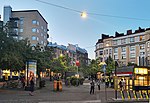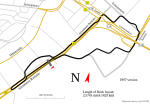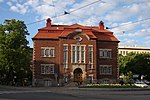Helsinki Upper Secondary School of Visual Arts

Helsinki Upper Secondary School of Visual Arts (Finnish: Helsingin kuvataidelukio) was established in 1925 and is located in Kallio in Helsinki, Finland. The school specializes in visual arts education and is maintained by the City of Helsinki. In 2021, the school had approximately 620 students. The school has had various names throughout its history: Helsinki Second Finnish Lyceum from 1925 to 1949, Helsinki Second Lyceum from 1950 to 1977, Torkkelinkatu Lyceum from 1977 to 1979, Torkkelin Lyceum from 1979 to 1991, and since 1991, it has been known as the Helsinki Upper Secondary School of Visual Arts. The school is commonly referred to as "Torkkeli" or "Tossu", and its students are known as "Torkkelilaiset" or "Tossut". The school has been a UNESCO school since 1990 and is part of the ASP network of schools. Helsinki Upper Secondary School of Visual Arts was the first high school in Finland to be declared a non-discrimination zone.
Excerpt from the Wikipedia article Helsinki Upper Secondary School of Visual Arts (License: CC BY-SA 3.0, Authors, Images).Helsinki Upper Secondary School of Visual Arts
Torkkelinkatu, Helsinki Kallio (Central major district)
Geographical coordinates (GPS) Address External links Nearby Places Show on map
Geographical coordinates (GPS)
| Latitude | Longitude |
|---|---|
| N 60.185833333333 ° | E 24.958333333333 ° |
Address
Helsingin kuvataidelukio (Tossu)
Torkkelinkatu 6
00500 Helsinki, Kallio (Central major district)
Finland
Open on Google Maps











